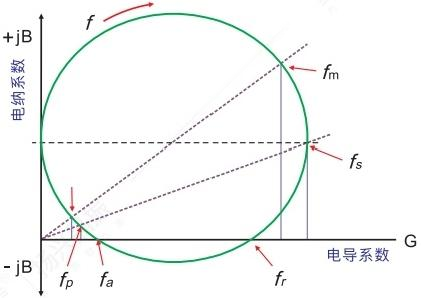发布时间:2012-05-24 阅读量:1235 来源: 我爱方案网 作者:
中心议题:
* Cypress PSoC CY8C21x23血压监测方案
Cypress 公司的PSoC CY8C21x23是集成了可配置的模拟和数字外设功能,存储器和微控制器,能替代多种基于MCU的传统系统的元件.M8C处理器采用功能强大的哈佛架构,速度高达24MHz,工作电压2.4V-5.25V.本文介绍PSoC CY8C21x23主要特性,方框图以及采用PSoC 的血压监测仪所用主要元件,原理和方框图.
Blood Pressure Monitor with PsoC
CY8C21123, CY8C21223, CY8C21323 : PSoC® Programmable System-on-Chip PSoC® is a true programmable embedded system-on-chip integrating configurable analog and digital peripheral functions, memory and a microcontroller on a single chip. The PSoC family consists of many programmable system-on-chip controller devices. These devices are designed to replace multiple traditional MCU-based system components with a low cost single-chip programmable component. A PSoC device includes configurable blocks of analog and digital logic, and programmable interconnect. This architecture allows the user to create customized peripheral configurations, to match the requirements of each individual application. Additionally, a fast CPU, Flash program memory, SRAM data memory, and configurable I/O are included in a range of convenient pinouts.
The PSoC architecture consists of four main areas: the Core, the System Resources, the Digital System, and the Analog System. Configurable global bus resources allow the combining of all device resources into a complete custom system. Each PSoC device includes four digital blocks. Depending on the PSoC package, up to two analog comparators and up to 16 General Purpose I/O (GPIO) are also included. The GPIO provide access to the global digital and analog interconnects.
CY8C21x23主要特性:
■ Powerful Harvard Architecture Processor:
❐ M8C Processor Speeds up to 24 MHz
❐ Low Power at High Speed
❐ 2.4V to 5.25V Operating Voltage
❐ Operating Voltages down to 1.0V using On-Chip Switch Mode Pump (SMP)
❐ Industrial Temperature Range: -40°C to +85°C
■ Advanced Peripherals (PSoC® Blocks):
❐ Four Analog Type “E” PSoC Blocks Provide:
• Two Comparators with DAC References
• Single or Dual 10-Bit 8:1 ADC
❐ Four Digital PSoC Blocks Provide:
• 8 to 32-Bit Timers, Counters, and PWMs
• CRC and PRS Modules
❐ Full Duplex UART, SPI™ Master or Slave: Connectable to All GPIO Pins
❐ Complex Peripherals by Combining Blocks
■ Flexible On-Chip Memory:
❐ 4K Flash Program Storage 50,000 Erase/Write Cycles
❐ 256 Bytes SRAM Data Storage
❐ In-System Serial Programming (ISSP)
❐ Partial Flash Updates
❐ Flexible Protection Modes
❐ EEPROM Emulation in Flash
■ Complete Development Tools:
❐ Free Development Software (PSoC Designer™)
❐ Full Featured, In-Circuit Emulator and Programmer
❐ Full Speed Emulation
❐ Complex Breakpoint Structure
❐ 128 Bytes Trace Memory
■ Precision, Programmable Clocking:
❐ Internal ±2.5% 24/48 MHz Oscillator
❐ Internal Oscillator for Watchdog and Sleep
■ Programmable Pin Configurations:
❐ 25 mA Sink, 10 mA Source on all GPIO
❐ Pull Up, Pull Down, High Z, Strong, or Open Drain Drive Modes on All GPIO
❐ Up to Eight Analog Inputs on GPIO
❐ Configurable Interrupt on all GPIO
■ Additional System Resources:
❐ I2C Master, Slave and MultiMaster to 400 kHz
❐ Watchdog and Sleep Timers
❐ User Configurable Low Voltage Detection
❐ Integrated Supervisory Circuit
❐ On-Chip Precision Voltage Reference
.gif)
图1.CY8C21x23方框图
Blood pressure is one of the vital signs in the human body. It is measured using both invasive and non invasive techniques. This application note demonstrates how to build a non invasive blood pressure monitor using the PSoC®. This design does not use any external active components to buffer, amplify, and filter the signal.
The blood pressure monitor operates on the following principles.
The cuff is worn around the upper arm and it is inflated beyond the typical systolic pressure.
It is then deflated. The pressure starts decreasing, resulting in blood flow through the artery; this makes the artery to pulsate.
The pressure measured on the device during onset of pulsations defines the systolic blood pressure.
Then the cuff pressure is reduced further. The oscillations become increasingly significant, until they reach maximum amplitude.
The pressure at the maximum amplitude of these oscillations defines the average blood pressure.
The oscillations start decreasing as the cuff pressure reduces. The pressure at this point defines the minimal blood pressure or diastolic blood pressure.
This method of measuring blood pressure is the oscillometric method. It is often used in automatic blood pressure monitor devices because of its excellent reliability. Estimation of systolic and diastolic pressure is done using various empirical algorithms. The device uses oscillometric method to determine systolic and diastolic pressures .
This system includes the following blocks:
Pressure sensor
Amplifier
Filter
Multiplexer and ADC
Heart rate timer
Safety timer
Pneumatics
Display
.gif)
图2. PSoC血压方框图
PSoC血压计主要元件:
1. Pressure Sensor
The pressure sensor for blood pressure monitoring system should have the following characteristics:
Measure pressures from 0 mmHG (0 Kpa) to 300 mmHg (40 Kpa).
Gauge type, because blood pressure in relation to atmospheric pressure
MPX2053 (piezoresistive pressure sensor from Free scale) is used in this example. It gives differential output with maximum measurable pressure range of 50 Kpa. It has a transfer characteristic of (20 mV/50 Kpa) 0.4 mv for every 1 Kpa change in pressure or 53 μV per mmHG with Vs=5V.
2. Amplifier
The sensor output is in the order of a few mega volts. Three opamp topology instrumentation amplifier is used to amplify the pressure signal. It provides a gain of 93.
Gain = Diff Gain * Conversion Gain = 48 * 1.98 = 93
3. Filter
The sensor output consists of two signals: cuff pressure signal and oscillometric signal. The oscillometric signal has frequency components between 0.3 Hz to 20 Hz. Two stage filters are used to filter out the oscillometric pulses.
4. First Stage
A high gain AC filter, described in the Cypress application note AN2320 is implemented in the first stage.
.gif)
图3.高AC 增益放大器电路
The filter’s cutoff is set around 1 Hz. This filter removes all DC components and gives the AC signal a sufficient gain. The output of the first stage has unwanted high frequency components.
5. Second Stage
High frequency components are removed using two pole low pass filters implemented inside PSoC. This filter is constructed using two switched capacitor blocks. The filter’s cutoff is set at 50 Hz with a 0 dB gain.
6. Multiplexer and ADC
DC Pressure signal and the oscillometric are multiplexed to ADC inside the PSoC. The MUX selects one of these signals to a 13-bit incremental ADC, which runs at a sampling rate of 30 samples/second.
7. Heart Rate Timer
A 24-bit timer is used to calculate the heart rate. Timer is clocked using a source of frequency 62.5 kHz. The period value is set to 500000 to deliver an output of 4 seconds. Heart rate is calculated by capturing the timer period at oscillometric pulse triggers.
Start the four second window timer
Capture the timer’s period value when oscillometric pulses crosses the defined threshold
Record timer value for four such crossings
.gif)
8. Safety Timer
This timer generates an interrupt every four seconds and checks if the cuff pressure is above specific threshold for that time window. (AAMI safety standards defines the maximum time limit for holding a particular pressure at arm cuff.) If the pressure in the cuff exceeds the safety pressure level then the solenoid valve is opened to deflate the cuff completely.
9. Pneumatics
Pneumatics forms the main part of any blood pressure monitoring system. Pneumatics of a typical monitor has the following:
Cuff
Air chamber
Rolling pump
Solenoid valve
The cuff is worn around the upper arm; it detects the change in pressure due to pulsation of artery. Cuff is connected to pressure sensor through air chamber, which in turn connects to the solenoid valve and rolling pump. Rolling pump inflates the cuff. Solenoid valve deflates the cuff at a defined rate .Usually the deflation rate is lowered if more samples of oscillometric pulses are needed and vice versa. Figure 5 shows the pneumatics setup used to build a typical blood pressure monitor.
10. Display
A 16x2 character LCD is used to display the results Using RS232 communication, the. oscillometric pulses are recorded with reference to pressure in cuff. Figure 6 shows the oscillometric pulses and pressure in cuff recorded during deflation.
.gif)
图4.PSoC血压计外形图

在电子电路设计中,晶振的每一项参数都与产品命运息息相关——哪怕只差0.1ppm,也可能让整板“翻车”。看似最基础的术语,正是硬件工程师每天必须跨越的隐形门槛。

在电子电路设计中,晶振的每一项参数都与产品命运息息相关——哪怕只差0.1ppm,也可能让整板“翻车”。看似最基础的术语,正是硬件工程师每天必须跨越的隐形门槛。

电路板中常用到恒温与温补这两种晶振,恒温晶振与温补晶振都属于晶体振荡器,既有源晶振,所以组成的振荡电路都需要电源加入才能工作

汽车电子系统日益复杂,尤其在48V架构、ADAS与电控系统普及的当下,对瞬态电压抑制器(TVS)的功率密度、高温耐受性及小型化提出了严苛挑战。传统大功率TVS往往体积庞大,难以适应紧凑的ECU布局。威世科技(Vishay)日前推出的T15BxxA/T15BxxCA系列PAR® TVS,以创新封装与卓越性能直面行业痛点,为下一代汽车设计注入强大保护能力。

韩国半导体巨头SK海力士近日在DRAM制造领域实现重大技术飞跃。据ZDNet Korea报道,该公司首次在其1c制程节点中成功应用6层EUV(极紫外)光刻技术,显著提升了DDR5与HBM(高带宽内存)产品的性能、密度及良率,进一步巩固其在先进内存市场的领导地位。